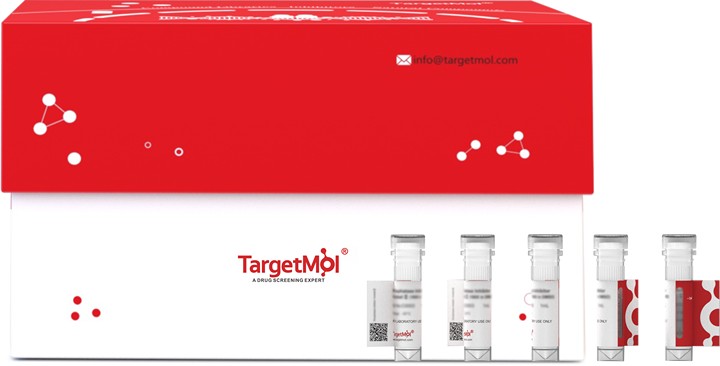Shopping Cart
Remove All Your shopping cart is currently empty
Your shopping cart is currently empty
OmpA Protein, E. coli, Recombinant (His) is expressed in E. coli expression system with N-10xHis tag. The predicted molecular weight is 38.0 kDa and the accession number is P0A910.

| Pack Size | Price | USA Warehouse | Global Warehouse | Quantity |
|---|---|---|---|---|
| 5 μg | $526 | 20 days | 20 days | |
| 10 μg | $886 | 20 days | 20 days | |
| 20 μg | $1,500 | 20 days | 20 days | |
| 50 μg | $2,090 | 20 days | 20 days | |
| 100 μg | $2,750 | 20 days | 20 days |
| Biological Activity | Activity has not been tested. It is theoretically active, but we cannot guarantee it. If you require protein activity, we recommend choosing the eukaryotic expression version first. |
| Description | OmpA Protein, E. coli, Recombinant (His) is expressed in E. coli expression system with N-10xHis tag. The predicted molecular weight is 38.0 kDa and the accession number is P0A910. |
| Species | E. coli |
| Expression System | E. coli |
| Tag | N-10xHis |
| Accession Number | P0A910 |
| Synonyms | tut,tolG,Outer membrane protein II*,Outer membrane protein d,Outer membrane protein B,Outer membrane protein A,Outer membrane protein 3A,Outer membrane porin A,ompA,OmpA,con |
| Amino Acid | APKDNTWYTGAKLGWSQYHDTGFINNNGPTHENQLGAGAFGGYQVNPYVGFEMGYDWLGRMPYKGSVENGAYKAQGVQLTAKLGYPITDDLDIYTRLGGMVWRADTKSNVYGKNHDTGVSPVFAGGVEYAITPEIATRLEYQWTNNIGDAHTIGTRPDNGMLSLGVSYRFGQGEAAPVVAPAPAPAPEVQTKHFTLKSDVLFNFNKATLKPEGQAALDQLYSQLSNLDPKDGSVVVLGYTDRIGSDAYNQGLSERRAQSVVDYLISKGIPADKISARGMGESNPVTGNTCDNVKQRAALIDCLAPDRRVEIEVKGIKDVVTQPQA |
| Construction | 22-346 aa |
| Protein Purity | > 85% as determined by SDS-PAGE. |
| Molecular Weight | 38.0 kDa (predicted) |
| Endotoxin | < 1.0 EU/μg of the protein as determined by the LAL method. |
| Formulation | Lyophilized from Tris/PBS-based buffer, 6% Trehalose, pH 8.0 |
| Reconstitution | A Certificate of Analysis (CoA) containing reconstitution instructions is included with the products. Please refer to the CoA for detailed information. |
| Stability & Storage | Lyophilized powders can be stably stored for over 12 months, while liquid products can be stored for 6-12 months at -80°C. For reconstituted protein solutions, the solution can be stored at -20°C to -80°C for at least 3 months. Please avoid multiple freeze-thaw cycles and store products in aliquots. |
| Shipping | In general, Lyophilized powders are shipping with blue ice. Solutions are shipping with dry ice. |
| Research Background | With TolR probably plays a role in maintaining the position of the peptidoglycan cell wall in the periplasm (Probable). Plays a role in resistance to environmental stress, and a role in outer membrane functionality and cell shape. Non-covalently binds peptidoglycan (Probable). Acts as a porin with low permeability that allows slow penetration of small solutes. A very abundant protein, there can be up to 210,000 OmpA molecules per cell. Reconstitution in unilamellar lipid vesicles shows only about 3% of the protein is in an open conformation, which allows diffusion of L-arabinose at a rate comparable to that of OmpF porin; the pores interconvert very rarely. Native and reconstituted protein forms ion channels with 2 conductance states of (50-80 pS) and (260-320 pS); the states are interconvertible in this study. Interconversion requires refolding of the periplasmic domain. Small pores are converted into large pores by increasing temperature; in this model the C-terminal periplasmic domain forms 8 more beta sheets to form a larger pore. The center of the isolated beta-barrel is polar and has a central gate (involving Glu-73, Lys-103, Glu-149 and Arg-159, sandwiched between Tyr-29, Phe-40 and Tyr-94), with no obvious passage for water or ions (Probable). Gating involves the Glu-73-Arg-159 salt bridge; gate opening probably involves formation of alternate salt bridges Glu-149-Arg-159 and Glu-73-Lys-103. Modeling suggests that non-covalent binding of OmpA (from the outer membrane) and TolR (from the inner membrane) to peptidoglycan maintains the position of the cell wall in the periplasm, holding it approximately equidistant from both the inner and outer membranes. Trimeric Lpp controls the width of the periplasm, adjusts its tilt angle to accommodate to the available space, and can compensate in part for an absence of OmpA (Probable).; Required for F plasmid cell conjugation; purified protein plus lipopolysaccharide (LPS) inhibits conjugation in a concentration-dependent manner. OmpA probably acts as the receptor on recipient cells (Probable). Required for the stabilization of mating aggregates during F plasmid conjugative transfer, may interact with F plasmid-encoded TraN, but not with TraN from plasmid R100-1. All 4 external, surface-exposed loops are required for F plasmid conjugation.; (Microbial infection) Mutants with decreased or altered protein are resistant to bacteriophage TuII*. Mutants which have no or greatly reduced protein levels are resistant to a number of bacteriophages, including K3, K4, K5, Ox2, Ox3, Ox4, Ox5, Ml, and Ac3 (Probable). Mutations in this protein render the bacteria partially or completely susceptible to a number of bacteriophages for which is it probably the receptor. All but the last external, surface-exposed loops are required for phage K3 infection.; (Microbial infection) A mutation in this locus (called tolG) renders the cell tolerant to bacteriocin JF246 but does not affect its sensitivity to colicins A, C, El, E2, E3, K, Ia, or Ib. Mutations in this protein render the bacteria partially or completely susceptible to colicin K or colicin L, for which is it probably the receptor. |
| Size | Quantity | Unit Price | Amount | Operation |
|---|

Copyright © 2015-2026 TargetMol Chemicals Inc. All Rights Reserved.